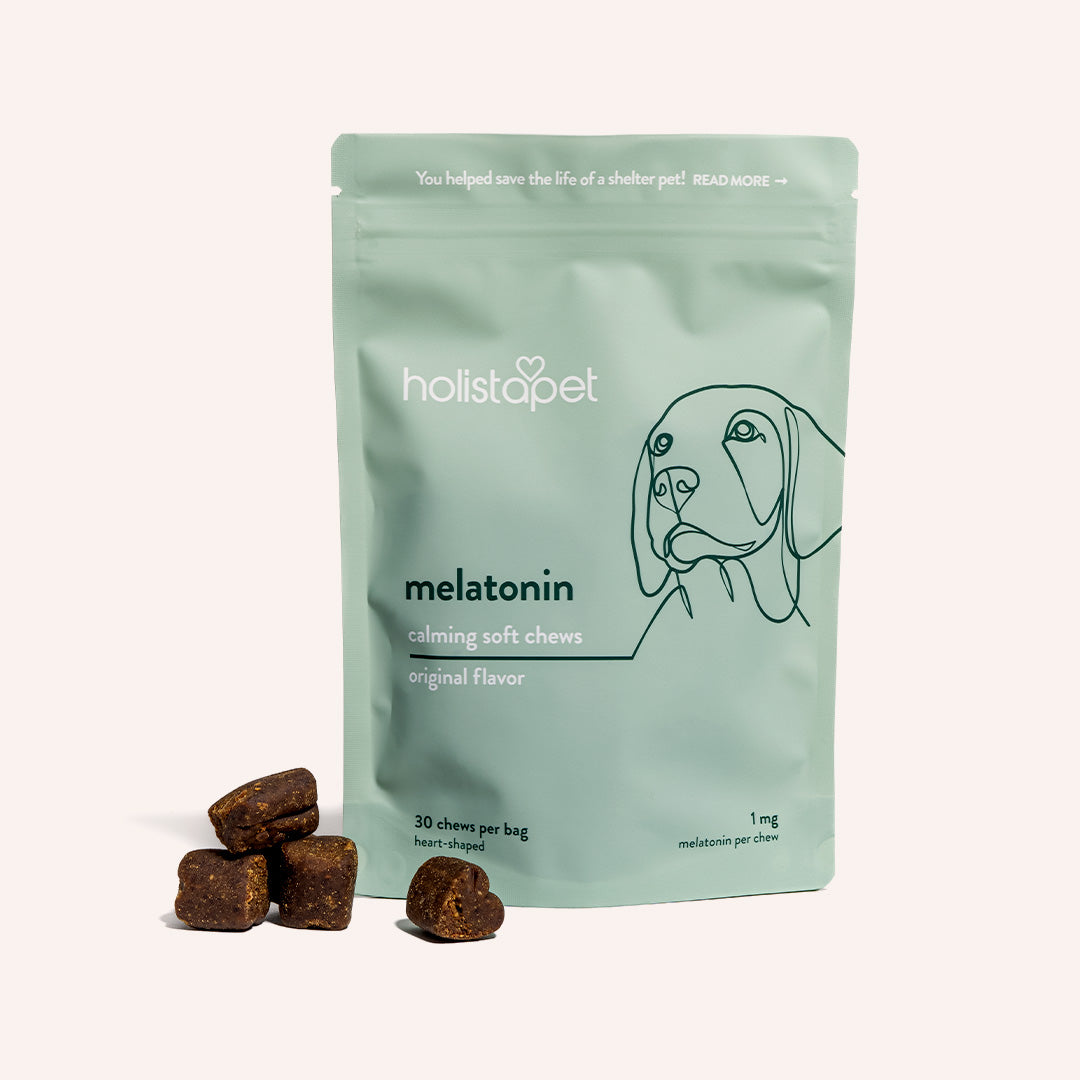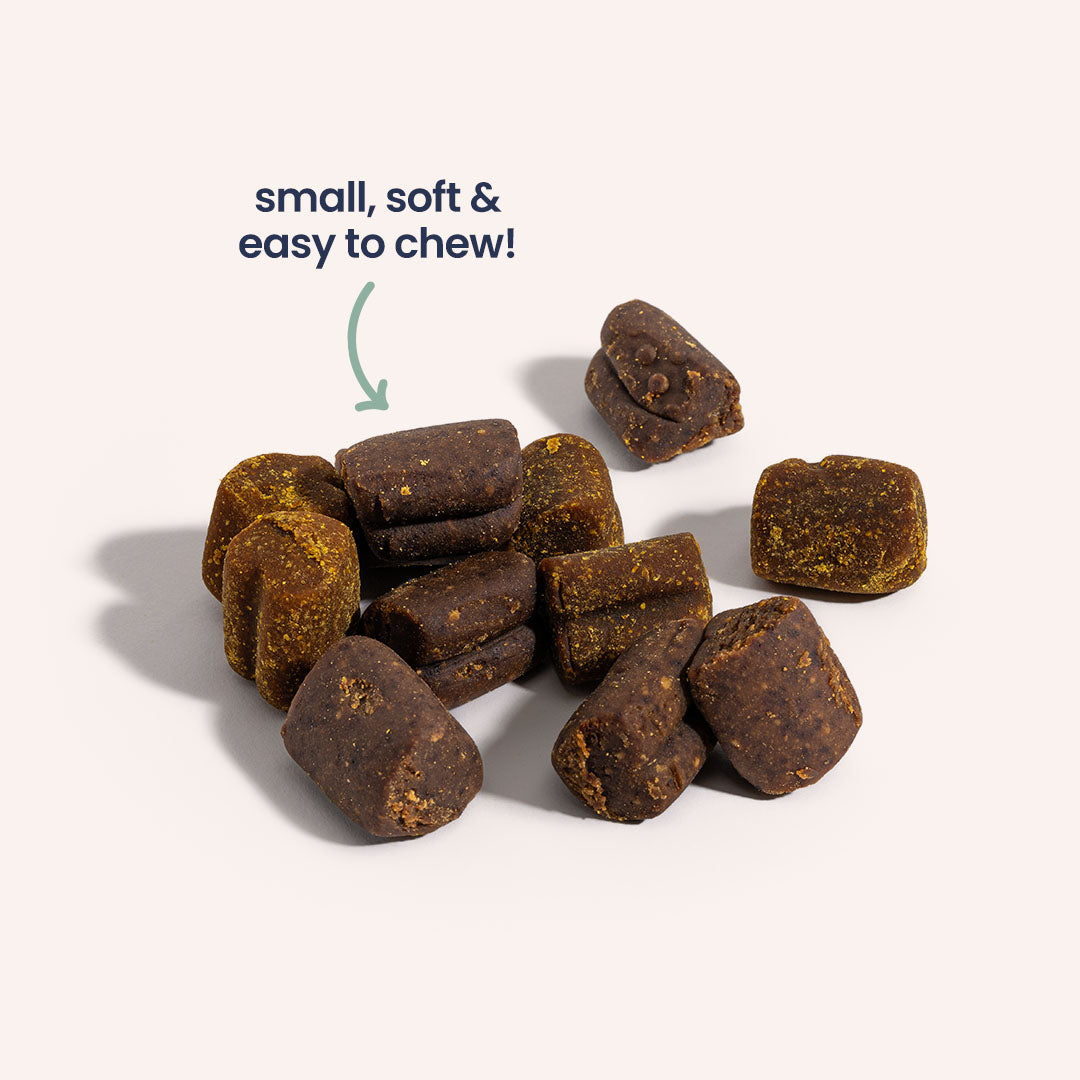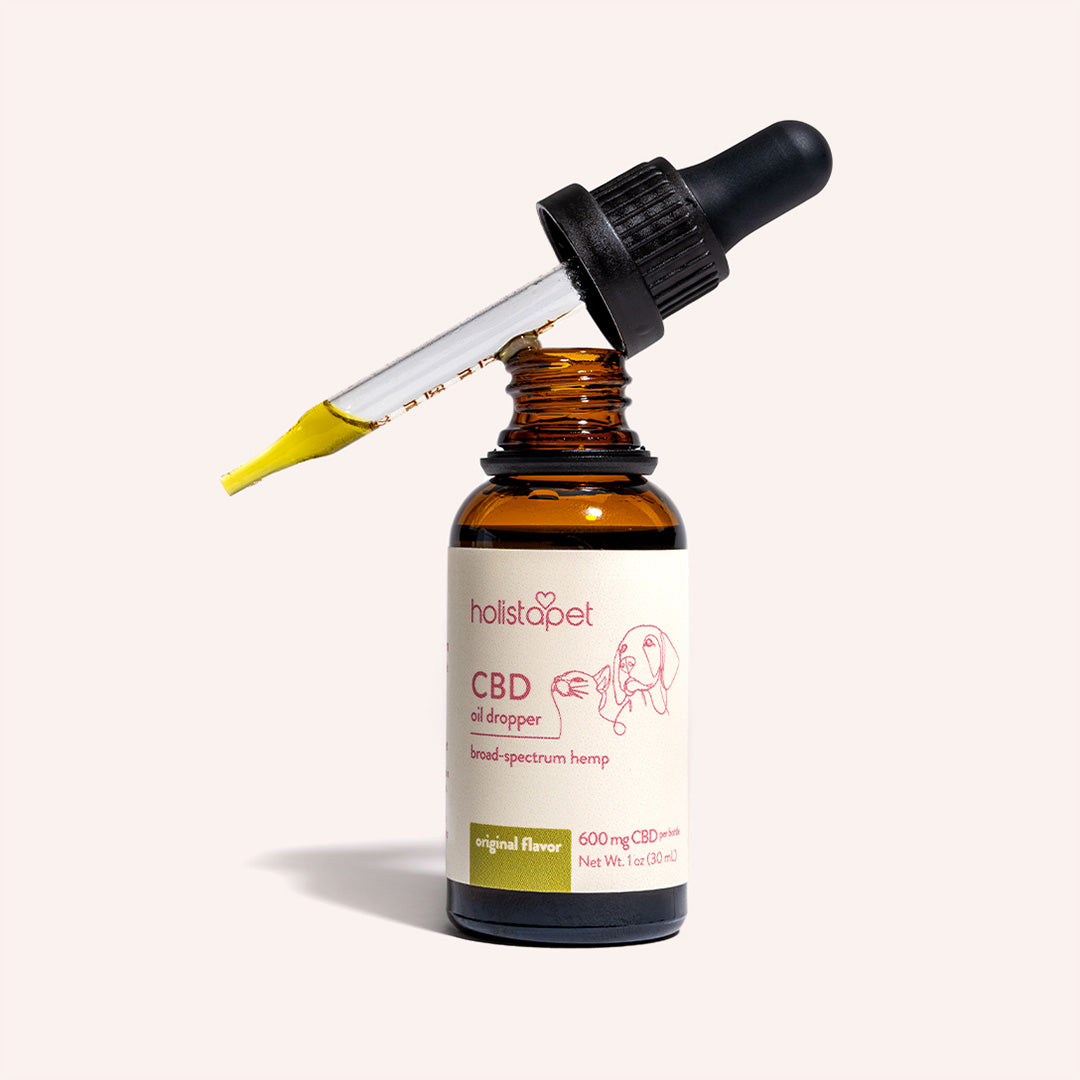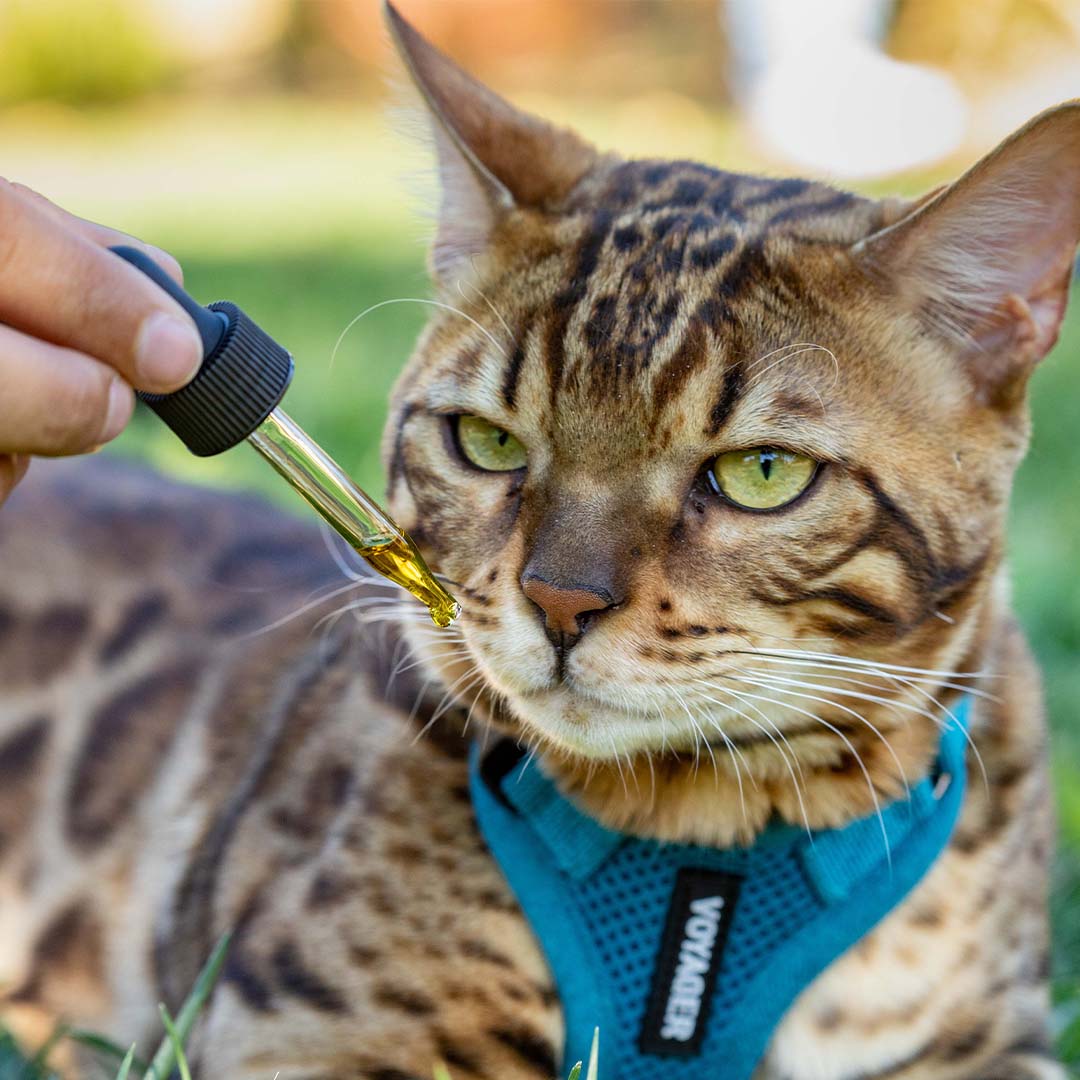Everyone loves how puppies grow up, and very few things can compare to the excitement of bringing one home! The puppy phase of a dog is one of the most important times in its life. Having a growth chart on hand can be helpful to ensure your puppy transitions into a healthy adult dog. Understanding each dog growth rate can help determine whether a puppy will be the perfect fit for a specific-sized home.
Each dog is unique in its own way, but as a responsible dog parent, understanding your dog's growth potential can help you prepare and provide it with the best care possible. Read on further to learn more about your puppy's growth, from week one to year one, why you need a growth chart, and everything in between!
What Are the Growth Stages of a Puppy?
People might think of puppyhood, adulthood, and old age when they think of different dog life stages. However, puppies experience different growth stages as they transition into mature adults. Before birth, puppies begin as tiny eggs inside the mother's womb. For about nine weeks, the litter of developing puppies is growing through different periods of growth.
During the 3rd week of pregnancy, the embryos are covered in a nutrient-rich membrane. You can get an ultrasound for your dog to see how many puppies are in the litter by the 4th week. By the 7th and 8th weeks, the puppies will start developing organs, fur, weight gain, and skeletal shape. Then, by the 9th and final week of pregnancy, your dog will birth a litter of adorable puppies that will go through the following different growth stages.
- Neonatal stage (0 to 2 weeks)
- Transitional stage (2 to 4 weeks)
- Socialization stage (4 to 12 weeks)
- Ranking stage (3 to 6 months)
- Adolescent stage (6 to 18 months)

What is Considered Normal Puppy Growth?
The rate of normal puppy growth depends on different varying factors. Your puppy's breed type, birth weight, diet, and exercise all play a huge factor in predicting its growth into a fully mature dog. Puppies that were orphaned might also develop growth concerns due to a lack of canine interaction and nutrition.
There is no precise way to guess your dog's growth as it goes from regular puppy weight to adult weight, so using a chart or graph can be incredibly helpful. Puppy growth is split into the following size groups to help separate the different growth rates.
- Toy Breeds
- Small Breeds
- Medium Breeds
- Large Breeds
- Giant Breeds
Another thing to consider before you adopt a puppy is its parents' health history. Some breeds are more susceptible to health concerns that may impact their growth. Before buying or adopting a puppy, ensure the breeder follows ethical and safe breeding practices. They should also have health certifications from various dog organizations or veterinarians. A reputable dog breeder should present health check clearances and proof of vaccinations to ensure you adopt a healthy puppy.
Growth Stages Week By Week for Puppies & Adult Dogs
How much do puppies grow each week? From the moment puppies are born, they are set to experience different stages of growth as they transform into their full adult size. Caring for a puppy is not an easy task, but it can be very rewarding! Dog parents take pride in being able to care for their cute little puppies responsibly. Understanding the different stages of your dog's puppyhood will help establish a bond that will last for half a lifetime.
Here's a breakdown of your puppy's growth chart to help you better understand the changes it will undergo!
1-Week Old Puppy
All puppies are born completely blind and deaf, relying on taste and smell to feel their surroundings. The mother plays a vital role by producing breast milk to feed her puppies. The mother's udder is scented so the puppies can use their sense of smell to find the breast and start feeding. The female dog will stay with her puppies and will lick them to give them a cleaning. A mother's lick can also help calm a puppy down if it starts to whine.

Although they can't walk yet, newly birthed puppies have enough strength in their front legs to crawl towards the warmth of their mother and siblings. These puppies can't create their own body heat at this stage, which is why they have to huddle closely with their siblings for warmth.
2-Week Old Puppy
After spending their first-week eating and sleeping, puppies will slowly start to gain weight. Some puppies will also start opening their eyes, but they won't be able to fully see yet. Their ears might also start picking up noises around them. By the second week, owners can begin to hold and gently pet the puppies.
They can also talk to them to start introducing them to human sounds and scents. During this neonatal stage or the first two weeks after birth, puppies spend 90% of their time sleeping. Depending on the breed, puppy weight can double by the end of two weeks.
3-Week Old Puppy
Many puppies start to walk and sit properly in their third week. With their ears fully opened, they begin to interact with their siblings by mimicking barks. The third week after birth, puppies start expressing more of their personalities. The third week of puppyhood is the transitional stage where puppies begin to explore outside of their sleeping space. Most puppies also begin to show less dependence on their mother. These young pups will also begin to grow their puppy teeth and start weaning off their mother.
4-Week Old Puppy
As their puppy teeth form, puppies will transition from their mother's milk to appropriate puppy food. The mother also produces less milk by the 4th week, leading the puppies to seek different food sources. Some puppies might sample some of their mom's food, but it's recommended to provide them with appropriate puppy kibble that is soft and easy to chew.
Weaning can take a few weeks, but in the meantime, puppies still eat between 4-6 times a day. Puppies should be getting the majority of their nutrients from their food by this point. As they continue to grow, it is best to weigh them at the beginning of each week to track their growth rate.
5-Week Old Puppy
From now until they are three months old, puppies enter the socialization stage. They'll start to become even more vocal during this period and develop more social skills with their littermates. Some pups start to learn how to bite down appropriately on different items. Since their teeth are still forming, now may be a great time to invest in a chew toy for puppies. Teething can be uncomfortable for some puppies, so having chew toys around helps alleviate any discomfort.

6-Week Old Puppy
At six weeks old, puppies begin to recognize familiar faces and establish bonds with the people around them. A few puppies might still try to feed off the mother's breastmilk, but the mother is usually reluctant since the forming teeth can cause discomfort for the mom. If you have been tracking your puppies' weight, use a feeding chart to determine how much food to provide for their current weight. Your puppy will continue to eat between five to six times a day.
At six weeks, puppies also start to pick up vocal cues from their owners. This is the ideal time to start teaching your puppies to understand basic commands and gradually expose them to different sights, smells, and objects.
7-Week Old Puppy
Your dog is ready for its first set of vaccines when it reaches seven weeks of age. Once the puppy is vaccinated, you can enroll them in puppy kindergarten classes to learn to behave appropriately around other pets. Although they are full of energy, keep exercises simple and not too strenuous. Their bones are still developing, and too much exercise can put a strain on their growing bodies. Instead of taking your puppy on a hike, have it run around in a fenced grassy area that's gentler on the legs.
8-Week Old Puppy
Most puppies at this age are ready for adoption. They are approaching the end of their socialization stage and start to show more adult dog tendencies. Most vets recommend adoption at eight weeks, so the puppies have enough time to grow and socialize with the mother and siblings.
Although they are still very curious, puppies might also begin showing fear and awareness of things due to overstimulation. It is important to use positive reinforcement and treats to help your puppy feel comfortable around different surroundings.
3-Month-Old Puppy
What is a 3 month old puppy size? The three-month mark is one of the most critical periods of puppyhood. Now is the time to consider potty training, teaching your puppy when not to bite, and crate training. At this stage, your puppy might receive another set of vaccine shots. Some puppies will start to lose their puppy teeth and start to grow their adult teeth which can cause them to want to chew on anything they can. Have chew toys available to help them ease any discomfort. It also helps to slowly introduce your dog to teeth cleaning and other grooming practices.

4-Month-Old Puppy
As dogs complete the socialization stage of puppyhood, they begin the ranking stage, which will last from 3-6 months. Some dogs may begin to start developing hormones as they transition into sexual maturity. This boost in testosterone or estrogen can cause dogs to act a little rebellious.
Dogs in this stage of development will start to establish ranking order among other pets and people they share their homes with. Dogs have a pack mentality, and dog owners must establish dominance so that their puppy will view them as the alpha leader of the pack.
5-Month-Old Puppy
Some people view this stage in a puppy's life as the beginning of its "teenage" years. Puppies might try to test boundaries, but it is important to continue training and reinforcing good behaviors. Investing time and effort into training your dog can help improve its psychological wellness and help it live happier lives.
If you have not started yet, get your puppy used to being groomed. Overgrown nails can limit their mobility, so it helps to have a dog that can sit there patiently while it's getting a pedicure or having its coat brushed. Puppies at this stage can also control their bladder when they need to go. Some pups are capable of joining you for short walks. You should also introduce leash training if your puppy comes from a high-energy dog breed that requires plenty of exercise as an adult.
6-Month-Old Puppy
How much do dogs grow after 6 months? You should notice significant changes to your dog's size and weight by six months of this age in weeks. Smaller breeds are close to reaching adulthood, while larger breeds are a little over halfway there. This stage in their lives marks the beginning of the adolescent stage of puppyhood. Some female dogs will start their first of a biannual heat cycle that is also referred to as estrus.
Some owners might consider spaying or neutering their dogs after reaching sexual maturity. It would help if you discussed any questions about when it is the right time to spay or neuter your puppy with a veterinarian.
7-Month-Old Puppy
Smaller breeds are typically fully grown when they reach seven months of age. Puppies should also have a full full grown set of adult teeth by now but will still try to chew on everything. You can provide your dog now CBD products. As by now, your puppy should start eating like an adult, so it's important to feed them the appropriate serving size for its weight split into two meals a day.

Some dogs may have four to five times more testosterone during this puberty stage than adult dogs, so it's not uncommon to see some puppies engage in bad behavior. Continue to use positive reinforcement and a calm, confident tone to teach your dog right from wrong.
8-Month-Old Puppy
Depending on the breed, some puppies' growth plates, soft areas at the end of long bones, are fully developed. This allows you to take your dog on more walks. Larger breeds may take a little longer for their growth plates to develop fully. Since some puppies are still in their adolescent stage, they may act stubbornly like rebellious teenagers, so continue to dedicate time to teach it obedience training and provide it with mental stimulation.
Many dogs at this stage exhibit behavior that makes it seem like they forgot their previous training. Dog parents should remain patient and understand that this kind of behavior settles down as they reach adulthood.
9-Month-Old Puppy & Older
When do puppies reach full size? If they have not started to already, some dog breeds begin to shed their puppy coat and develop their adult coat at this age. Some breeds are hairier than others, so your puppy should get used to staying calm while being brushed. Most breeds should reach their full size from nine months to one year, while dogs grow the larger breeds are at least 80% their full weight. Smaller breeds mature faster and should be fully grown by the one-year mark. Other large breeds of dogs will continue to grow and reach their adult size at about 1.5-2 years.
Although most dogs are fully grown after one year, they might not reach mental maturity until two years old. Each breed is different, so dogs reach adulthood at different ages, but the average is around 18 months. Fully mature, properly-trained dogs will act more calmly and relaxed in most situations.
Growth Chart by Dog Breed Size
You can get a good idea of your dog or puppy's adult size if you know what dog breed group it belongs to. Looking up your puppy's growth chart and weighing them weekly can help you estimate what its final weight and size will be. Here is a growth chart breakdown by dog breed size. It's common for some dogs to overlap between each size category.
Toy Breeds
Toy breeds are the smallest dog breeds in the world! Generally, the smaller they are, the faster they reach maturity. Here are some examples of the most popular dogs from the toy breed group:

Toy breed puppies will grow rapidly from the moment they are born and up to about 11-12 weeks. Sometimes, they might even gain 10% of their maximum weight in just a few days. Some toy dog breeds can reach sexual maturity as early as four months old. When toy puppies are ten months old, they might have already reached their adult size and weight. A few of these dogs can take up to a year to reach their full adult size before they stop growing. Most dogs in this breed group generally weigh between 4-12 pounds.
Small Breeds
Small dogs are still lightweight but develop through puppyhood at a different growth rate than toy small medium large other dogs. This dog group also contains some of the most adorable and popular puppy breeds, such as:
- Beagles
- Jack Russell Terrier
- Cocker Spaniel
- Pug
- French Bulldog
Throughout puppyhood, a small dog breed can gain 5-8 ounces a week. Their final weight can be anywhere between 12-25 pounds. Small dogs can take 8-16 months to reach their full size and weight. The small female puppy begins its heating cycle between 6 and 8 months. Small dogs also experience significant growth between weeks 1 and 12 after birth.
Medium Breeds
Medium-sized dog breeds are perfect for people who want a puppy that isn't too small but not too big either. You can witness the difference in size as they undergo a rapid growth rate between birth to 16 months. Medium breeds might have the most overlap from small or large breeds, so this is where a growth chart be useful! This group contains the following breeds:
- Corgi
- English Bulldog
- Whippet
- Basset Hound
- Border Collie
Most medium dog puppies reach close to 90% of their adult weight at around 9-10 months. When medium dogs reach their adult size in 12-16 months, their final weight is about 25 lbs-50 pounds.

Large Breeds
Despite their size, large breeds are just as playful and adorable as miniature dog breeds. Dogs on this side of the size spectrum take longer to grow into their full adult weight and size. This category of large breed of dogs contains some well-known favorites in the pet community, such as:
- Golden Retriever
- German Shepherd
- American Bulldog
- Boxer
- Akita
Puppies in the large dog category can take at least a year to 18 months to reach their adult weight and size. Whereas smaller dogs gain ounces every week, larger puppies can gain one or two pounds at the end of each week. At full adulthood, these large dogs can weigh between 50-100 pounds.
The larger the breed, the larger the bones, which need time to fully develop. Dog owners of large breeds should consider easy and light exercise early on, so a large pup's growing bones and joints are not overstressed. Puppies that will grow into large dog breeds might not reach skeletal maturity until around 18 months.
Giant Breeds
The bigger the dog, the more there is to love about them. Giant breeds might seem large and giant and intimidating but are only gentle giants full of affection. The dogs in this category have some of the cutest puppies in the dog world.
Here are some common giant dog breeds:
- Irish Wolfhound
- Newfoundland Dog
- Great Dane
- Mastiff
- Saint Bernard

The biggest puppies take the longest to grow. These pups will continue to grow past one year old and might not reach full adult maturity until two years. It is common to have a giant breed puppy gain 2-5 pounds each week.
Mixed Breeds
Figuring out a mixed puppy breed's final adult weight can be tricky. If you adopted a purebred puppy, guessing its final weight is a lot easier. You can always refer to the parents' weight or the breed's standards. Dog parents figure out their mixed breed or puppy's weight by taking a DNA test.
This test will reveal what breeds are found in your puppy to help estimate its total adult weight and size. If you know your pup's exact age, you can weigh it and compare it to the size chart of other dog breeds mentioned in the sections above.
Puppy Maturity
Watching your dog transition from puppy to adult is an enriching experience! In general, the smaller the dog, the sooner the puppy will grow and reach maturity. The larger they are, the longer it will take. Throughout that journey to adulthood, puppies will mature physically, mentally, emotionally, and sexually at different growth rates.
Physical Maturity
When puppies reach their full size, they are considered to have reached physical maturity. Their skeletons have reached their full potential. Depending on the breed, some puppies reach their physical maturity by one year, while others take two years. Furry puppies will usually shed their coats and grow into their large coats around nine months. Puppies usually mature physically first before they do emotionally. You can use a growth chart to guess when their physical maturity will be and how big they might get!
Mental and Emotional Maturity
It's pretty common to have a physically mature dog that still acts like a puppy because they have not matured emotionally and mentally. Your puppy will finally have an adult temperament anytime between one or two years, depending on the breed. Some breeds may not even reach full mental maturity until after two years.
At this stage of maturity, puppies will no longer act like a puppy but will be more responsive to commands and body language. A mature dog will know how to settle down and will not test boundaries like it might have used to when it was a puppy. Even after your puppy has transitioned into a mature dog, it is important to continue to provide it with consistent training.

Sexual Maturity
One of the main reasons dogs can take a while to mature emotionally and mentally is the increased hormonal activity they experience after becoming sexually mature. Sexual maturity affects male and female dogs differently.
Females
On average, female dogs will have two heat cycles a year. Female dogs can enter sexual maturity as early as 4-6 months old depending on their breed. Larger breeds might not reach sexual maturity until after 12 months. Each heat cycle can last anywhere from 2-4 weeks. During this time, your female pup might have some of the following symptoms.
- Appetite changes
- Vaginal discharge
- Changes in mood and behavior
Although they might be ready to breed, most veterinarians recommend holding off on having your dog mate because it has not reached full adult maturity.
Males
When male dogs reach sexual maturity, they might display some of the following signs:
- Territory marking: Your pup might be more likely to pee on certain areas around its home to attract potential mates and discourage other male dogs.
- Mood changes: When some male pups become sexually mature, they might act a little aggressive or rebellious. Remember to use positive reinforcement to remind your pup that its behavior will not be tolerated.
- Likely to roam: An increase in hormones and a willingness to mate will make a male pup more likely to explore outside its settings.
Male pups can experience sexual maturity between 6-18 months, depending on their size. If you have multiple dogs in heat, it might be best to keep them away from each other to prevent mating or speak with your vet about spaying or neutering.
Overweight & Underweight Dogs
Having access to and understanding your puppy's growth chart can help you determine if your pup is under or overweight. Make sure to keep an appropriately sized scale to help you keep track of your puppy's weight.

Factors to Include
Here are some factors to consider when trying to determine your dog's weight.
- Diet
- Breed
- Size
- Weight
- Present health issues
Every dog is different, but experts and dog lovers everywhere agree that your dog's diet plays an important role in getting it to its ideal weight. Choose all-natural food and free of artificial ingredients, GMOs, and preservatives. Look for puppy food brands with an Association of American Feed Control Officials (AAFCO) certification.
If you want to provide your pup with a homecooked meal, consult with a vet to see which foods are okay to consume and to create a proper diet plan that provides all the necessary nutrients.
Underweight
There are several reasons why your puppy might be underweight. They may not be eating enough because of digestion issues, or some dog owners might accidentally underfeed their pups. Although dogs can lose weight by eating smaller portions, they may get fewer vitamins and nutrients required for healthy growth. A lack of essential nutrients can impair your puppy's development.
Overweight
Over half of the population of dogs struggle with obesity. A chubby puppy may look cute, but an overweight dog is more susceptible to various health issues. An overweight dog might have one or more of the following symptoms:
- Excessive panting
- Refusal to play or go on walks
- Potential long term effects like joint swelling, limited movement, and heart issues
Besides eating the right portions, a puppy should be getting the appropriate amount of exercise to stay in shape. If your puppy is overweight, you can consult a vet to determine a proper weight loss program.
Ideal Weight
Some people might have difficulty getting their puppy to sit still on a scale long enough to determine its current weight. A visual test is available to help you see if your puppy is under, over, or in its ideal weight. A growth chart is handy here, so you can check where your dog should be at a certain age!

If you can clearly see your puppy's ribs, spine, and pelvic bones from a distance, then it is underweight. If the ribs are not visible and can only be felt by pressing your hands along its side to touch them, then your dog might be overweight. If the ribs are felt gently, it is most likely within its ideal weight range. Your puppy will benefit from a healthy lifestyle if they are at their ideal weight. Refer to their growth chart to determine the perfect weight range!
Related: How Heavy Should My Dog Be? 5 Ways to Tell If Your Dog is Overweight
Final Thoughts
Owning a puppy is one of the most extraordinary things a person can do! If you've ever wondered, "How big will my first puppy get and grow?" it's essential to understand and learn your puppy's growth chart. It will help you better prepare to provide your little pup with a healthy and fun-filled life. As always, if you have any further concerns, seek a vet for more detailed advice regarding your pup! If you want to learn more about more specific dog breeds, check out our other great articles on HolistaPet!








![Probiotics For Dogs [Soft Chews]](http://www.holistapet.com/cdn/shop/files/Probiotic-Infographic-1_472d7a29-e30c-435a-9638-1365d8c3a9f9.jpg?v=1725384841&width=104)















![Puppy Growth Chart [Stages of Growth + How To Determine Ideal Size]](http://www.holistapet.com/cdn/shop/articles/254.jpg?v=1715222167&width=1500)













Leave a comment
This site is protected by hCaptcha and the hCaptcha Privacy Policy and Terms of Service apply.